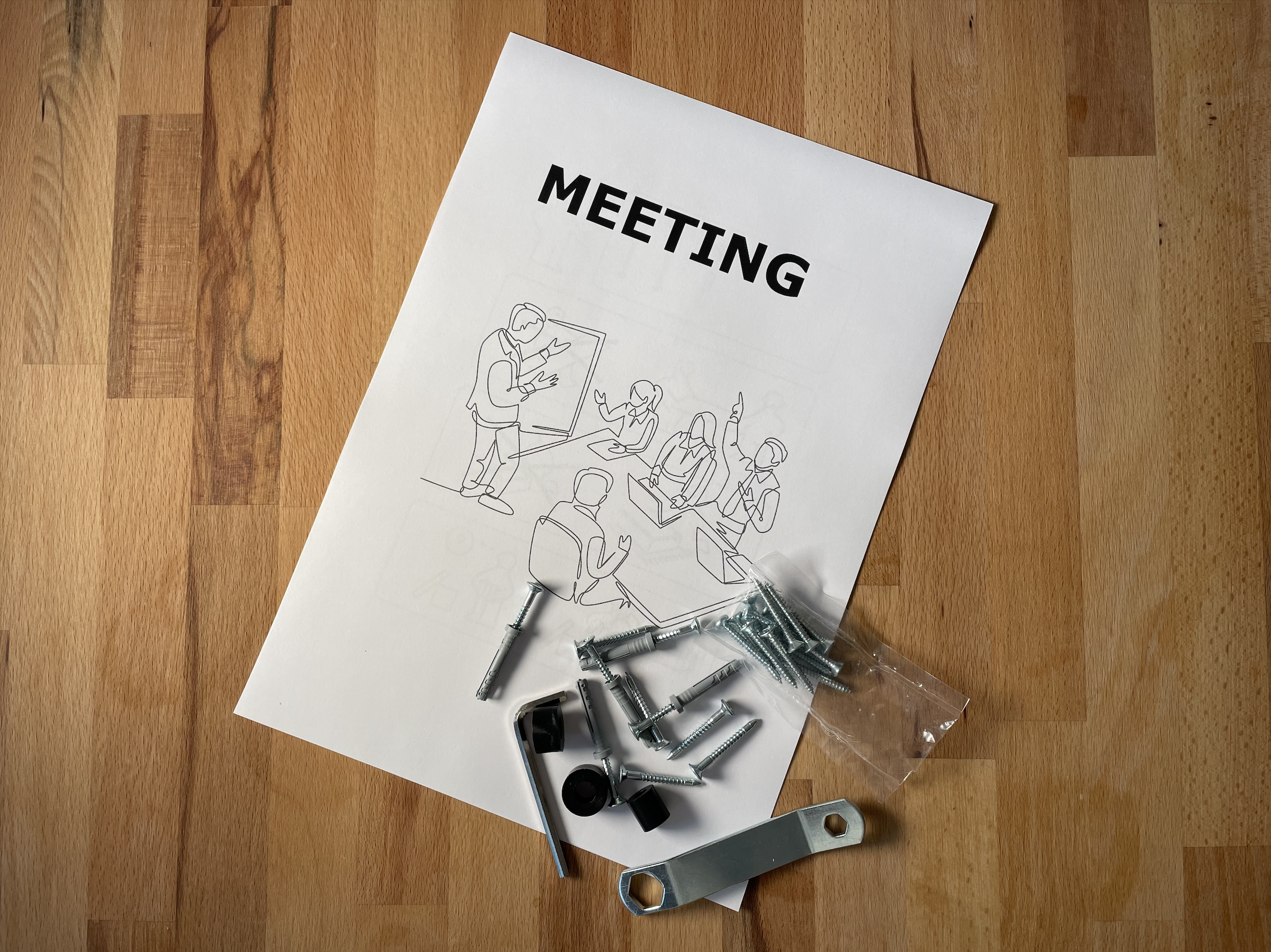
How do we get our colleagues to love meetings? The secret lies in the success of brands like IKEA and Build-a-Bear Workshop: let them do the work.
When instant cake mix was invented in the 1950s, adoption rates were initially low. This was reportedly because consumers thought the process was now too easy. Home bakers rejected the convenience of the new product because they felt that their skills were being minimised too much. Instant cake mix manufacturers responded by tweaking the recipe. They now required one fresh ingredient - an egg - and suddenly the new product took off.
A labor of love
This parable of a new go-to-market echoes a phenomenon that has puzzled experts for decades. Why do workers go to Subway on their lunch break to create their own sandwich, rather than buying one pre-made by a professional? Why do people go to Build-a-Bear Workshop and spend more on a bear they make themselves, rather than one that is already stuffed for less money? Why do people love IKEA?
The answer seems to be that people value things more when they build it themselves (even if they only contributed a tiny amount to the construction) than if they can acquire something without any effort. They will value something they make themselves more than something they do not have a hand in making, even if the end product is of lower quality. And that this trend applies to people who don’t generally like to build and create things - as well as those who do.
So, what does all this have to do with meetings?
The point of all of these examples is that people don’t like to just have things handed to them. We like to work for things (even if we often pretend we don’t) and we value things more greatly when we have made a contribution compared to when we don’t. If we think about the average meeting from the perspective of the audience, this is not how we tend to work.
In most meetings the work is done by the meeting leader. They set the agenda, they create the presentation, they do the majority of the talking. If you work in this way, maybe you think you’re doing your audience a favor. You are not burdening them the responsibility of organizing the content of the meeting. They just need to turn up, listen, and take in the information that you want them to take in.
Taking advantage
The problem here is that this fails to take advantage of this quirk of behavioural economics. If you choose to meaningfully engage your audience - rather than talking at them - you can transform them from passive onlookers to active participants. This means that you can run meetings that your co-workers are more likely to love.
By letting them have their say, by letting them do some of the work, by letting them do some of the thinking, you will succeed in getting the buy-in from everyone in the room in a way you never could before. Your audience will place greater value on the meeting and its content, meaning it will mean more to them and the information will be more likely to stick.
Two important details
When taking this approach of getting audiences to actively participate in presentations to maximize engagement and value, it is important to remember two important details. The first is that the studies that discovered the IKEA effect found that the phenomenon only really occurs if the task is completed. If the task is left incomplete the effect is lost. This is the one downside of this approach. Although, this is likely the case for meetings of all kinds. And approaching them in this collaborative way is proven to be a much more efficient and effective way of running meetings. So people are less likely to come out of meetings feeling like nothing was achieved.
The other detail is that the IKEA effect and similar phenomena affects both enthusiasts and people who are generally uninterested. If we translate this into the meeting example, it means we can use this approach to tap into groups of people who are usually reluctant to contribute. So we can access a broader range of experiences, skills, and expertise.
Final takeaways
As leaders we try to be superheroes sometimes. We like to show people that we can do all the work, and resist putting things onto other peoples’ plates as much as possible. When we lead teams we like to unburden our colleagues and make their lives easy, to allow them to do their jobs undistracted by unnecessary tasks.
But really, if we want them to begin to love the meetings we host. If we want the information we are sharing to stick. If we want to work in the most productive way possible: we need to step back and let our colleagues do the work, let their voice be heard, and allow them to meaningfully engage with each other. That way they will begin to value meetings much more - and maybe even learn to love them.


